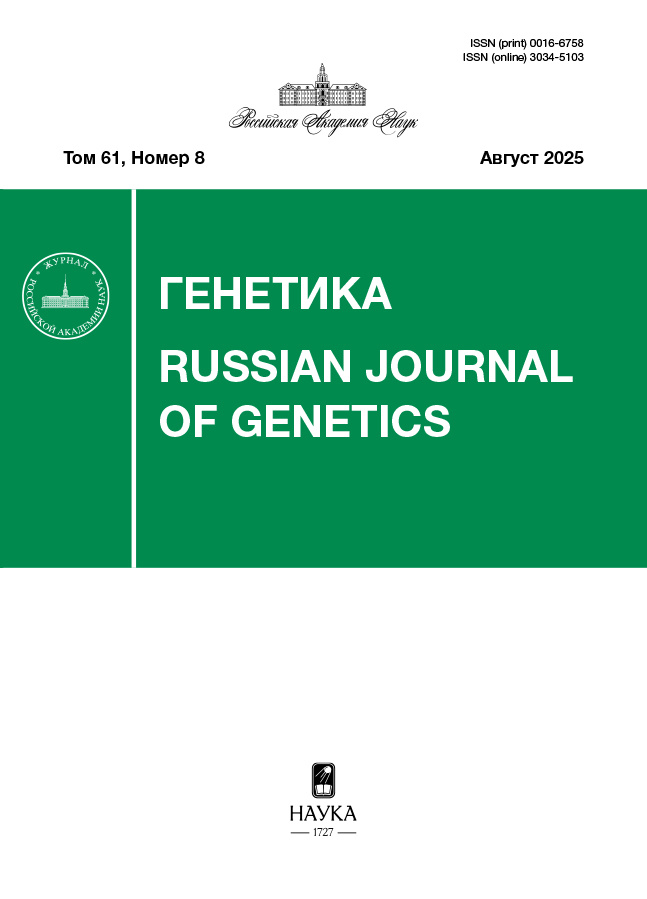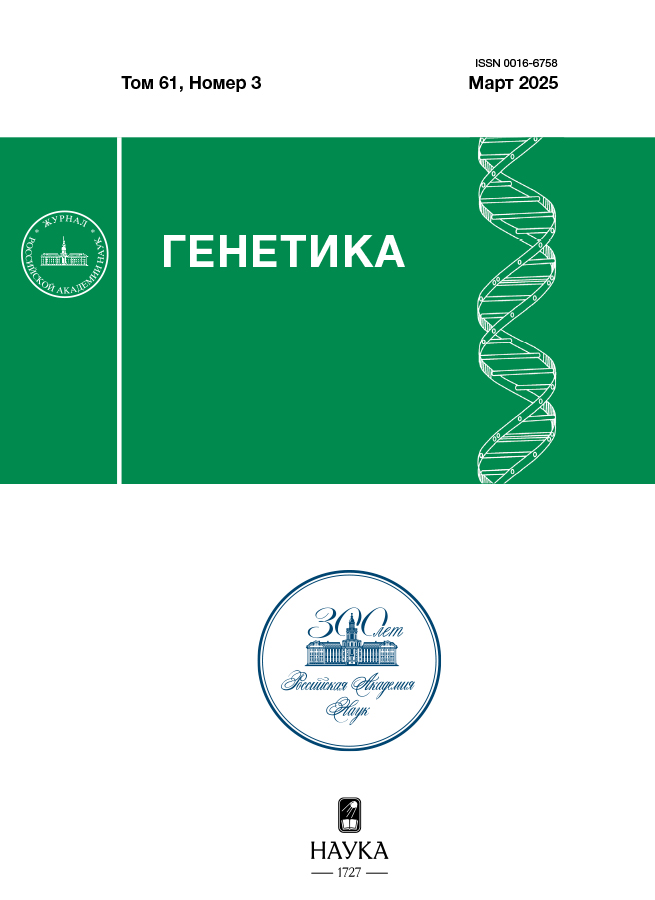Протеомный анализ штамма Levilactobacillus brevis 47f в условиях окислительного стресса
- Авторы: Полуэктова Е.У.1, Мавлетова Д.А.1, Зиганшин Р.Х.2, Даниленко В.Н.1
-
Учреждения:
- Институт общей генетики им. Н.И. Вавилова Российской академии наук
- Институт биоорганической химии им. М.М. Шемякина и Ю.А. Овчинникова Российской академии наук
- Выпуск: Том 61, № 3 (2025)
- Страницы: 21-31
- Раздел: ГЕНЕТИКА МИКРООРГАНИЗМОВ
- URL: https://ter-arkhiv.ru/0016-6758/article/view/679418
- DOI: https://doi.org/10.31857/S0016675825030038
- EDN: https://elibrary.ru/ULRRRN
- ID: 679418
Цитировать
Полный текст
Аннотация
Окислительный стресс клетки – дисбаланс между активными формами кислорода и способностью инактивировать оксиданты и восстанавливать поврежденные молекулы. Окислительный стресс вовлечен в патогенез многих заболеваний человека. Лактобациллы, являясь постоянными компонентами кишечной микробиоты человека, способны снижать проявления окислительного стресса у макроорганизма и используются в качестве фармабиотиков при лечении вызываемых им заболеваний. Штамм Levilactobacillus brevis 47f выделен из кишечника человека, исследован в опытах in vitro и in vivo и является потенциальным пробиотиком антиоксидантного действия. Механизмы, определяющие ответ штамма на окислительный стресс, мало изучены. Задачей данной работы было исследовать реакцию штамма L. brevis 47f на окислительный стресс, вызванный перекисью водорода и кислородом, методом количественного протеомного анализа. При действии обоих оксидантов жизнеспособность клеток штамма практически не менялась, однако оба оксиданта вызывали значительное, но разное изменение экспрессии белков штамма. Кислород оказывал более сильное действие на штамм, чем перекись водорода. При действии перекиси в основном активизировались белки стрессового ответа, при действии кислорода происходили значительные изменения метаболизма.
Ключевые слова
Полный текст
Об авторах
Е. У. Полуэктова
Институт общей генетики им. Н.И. Вавилова Российской академии наук
Автор, ответственный за переписку.
Email: epolu@vigg.ru
Россия, Москва, 119991
Д. А. Мавлетова
Институт общей генетики им. Н.И. Вавилова Российской академии наук
Email: epolu@vigg.ru
Россия, Москва, 119991
Р. Х. Зиганшин
Институт биоорганической химии им. М.М. Шемякина и Ю.А. Овчинникова Российской академии наук
Email: epolu@vigg.ru
Россия, Москва, 117997
В. Н. Даниленко
Институт общей генетики им. Н.И. Вавилова Российской академии наук
Email: epolu@vigg.ru
Россия, Москва, 119991
Список литературы
- Sies H. Oxidative stress: Concept and some practical aspects // Antioxidants (Basel). 2020. V. 9. № 9. https://doi.org/10.3390/antiox9090852
- Sun Y., Wang X., Li L. et al. The role of gut microbiota in intestinal disease: from an oxidative stress perspective // Front. Microbiol. 2024. V. 15. https://doi.org/10.3389/fmicb.2024.1328324
- Averina O.V., Poluektova E.U., Marsova M.V., Danilenko V.N. Biomarkers and utility of the antioxidant potential of probiotic lactobacilli and bifidobacteria as representatives of the human gut microbiota // Biomedicines. 2021. V. 9. № 10. https://doi.org/10.3390/biomedicines9101340
- Feng T., Wang J. Oxidative stress tolerance and antioxidant capacity of lactic acid bacteria as probiotic: a systematic review // Gut Microbes. 2020. V. 12. № 1. https://doi.org/10.1080/19490976.2020. 1801944
- Kong Y., Olejar K.J., On S.L.W., Chelikani V. The potential of Lactobacillus spp. for modulating oxidative stress in the gastrointestinal tract // Antioxidants (Basel). 2020. V. 9. № 7. https://doi.org/10.3390/antiox9070610
- Zhao T., Wang H., Liu Z. et al. Recent perspective of Lactobacillus in reducing oxidative stress to prevent disease // Antioxidants (Basel). 2023. V. 12. № 3. https://doi.org/10.3390/antiox12030769
- Feyereisen M., Mahony J., Kelleher P. et al. Comparative genome analysis of the Lactobacillus brevis species // BMC Genomics. 2019. V. 20. № 1. Article 416. https://doi.org/10.1186/s12864-019-5783-1
- Kim K., Yang S., Paik H. Probiotic properties of novel probiotic Levilactobacillus brevis KU15147 isolated from radish kimchi and its antioxidant and immunoenhancing activities // Food Sci. Biotechnol. 2021. V. 30. P. 257–265. https://doi.org/10.1007/s10068-020-00853-0
- Stankovic M., Veljovic K., Popovic N. et al. Lactobacillus brevis BGZLS10-17 and Lb. plantarum BGPKM22 exhibit anti-inflammatory effect by attenuation of NF-κB and MAPK signaling in human bronchial epithelial cells // Int. J. Mol. Sci. 2022. V. 23. № 10. https://doi.org/10.3390/ijms23105547
- Kumar S., Praneet N.S., Suchiang K. Lactobacillus brevis MTCC 1750 enhances oxidative stress resistance and lifespan extension with improved physiological and functional capacity in Caenorhabditis elegans via the DAF-16 pathway // Free Radic. Res. 2022. V. 56. № 7–8. P. 555–571. https://doi.org/10.1080/10715762.2022.2155518
- Jiang X., Gu S., Liu D. et al. Lactobacillus brevis 23017 relieves mercury toxicity in the colon by modulation of oxidative stress and inflammation through the interplay of MAPK and NF-κB signaling cascades // Front. Microbiol. 2018. V. 9. https://doi.org/10.3389/fmicb.2018.02425
- Yunes R., Poluektova E., Dyachkova M. et al. GABA production and structure of gadB/gadC genes in Lactobacillus and Bifidobacterium strains from human microbiota // Anaerobe. 2016. V. 42. P. 197–204. https://doi.org/10.1016/j.anaerobe.2016.10.011
- Marsova M., Abilev S., Poluektova E., Danilenko V. A bioluminescent test system reveals valuable antioxidant properties of Lactobacillus strains from human microbiota // World J. Microbiol. Biotechnol. 2018. V. 34. № 2. Article 27. https://doi.org/10.1007/s11274-018-2410-2
- Marsova M., Odorskaya M., Novichkova M. et al. The Lactobacillus brevis 47f strain protects the murine intestine from enteropathy induced by 5-fluorouracil // Microorganisms. 2020. V. 8. № 6. https://doi.org/10.3390/microorganisms8060876
- Olekhnovich E., Batotsyrenova E., Yunes R. et al. The effects of Levilactobacillus brevis on the physiological parameters and gut microbiota composition of rats subjected to desynchronosis // Microbial. Cell Factories. 2021. V. 20. Article 226. https://doi.org/10.1186/s12934-021-01716-x
- Kochetkov N., Smorodinskaya S., Vatlin A. et al. Ability of Lactobacillus brevis 47f to alleviate the toxic effects of imidacloprid low concentration on the histological parameters and cytokine profile of Zebrafish (Danio rerio) // Int. J. Mol. Sci. 2023. V. 24. № 15. https://doi.org/10.3390/ijms241512290
- Полуэктова Е.У., Аверина О.В., Ковтун А.С., Даниленко В.Н. Транскриптомный анализ штамма Levilactobacillus brevis 47f в условиях окислительного стресса // Генетика. 2023. Т. 59. № 8. С. 888–897. https://doi.org/10.31857/S0016675823080106
- DeMan J., Rogosa M., Sharpe M. A medium for the cultivation of lactobacilli // J. Appl. Microbiol. 1960. V. 23. № 1. P. 130–135. https://doi.org/10.1111/j.1365-2672.1960.tb00188.x
- Rappsilber J., Mann M., Ishihama Y. Protocol for micro-purification, enrichment, pre-fractionation and storage of peptides for proteomics using StageTips // Nat. Protoc. 2007. V. 2. № 8. P. 1896–1906. https://doi.org/10.1038/nprot.2007.261
- Ma B., Zhang K., Hendrie C. et al. PEAKS: Powerful software for peptide de novo sequencing by tandem mass spectrometry // Rapid. Commun. Mass Spectrom. 2003. V. 17. № 20. P. 2337–2342. https://doi.org/10.1002/rcm.1196
- Yang M., Wenner N., Dykes G.F. et al. Biogenesis of a bacterial metabolosome for propanediol utilization // Nat. Commun. 2022. V. 13. № 1. Article 2920. https://doi.org/10.1038/s41467-022-30608-w
- Mota M.J., Lopes R.P., Sousa S. et al. Lactobacillus reuteri growth and fermentation under high pressure towards the production of 1,3-propanediol // Food Res. Int. 2018. V. 113. P. 424–432. https://doi.org/10.1016/j.foodres.2018.07.034
- Champomier-Vergès M.C., Zuñiga M., Morel-Deville F. et al. Relationship between arginine degardation, pH and survival in Lactobacillus sakei // FEMS Microbiol. Lett. 1999. V. 180. P. 297–304. https://doi.org/10.1111/j.1574-6968.1999.tb08809.x
- Basu Thakur P., Long A.R., Nelson B.J. et al. Complex responses to hydrogen peroxide and hypochlorous acid by the probiotic bacterium Lactobacillus reuteri // mSystems. 2019. V. 4. № 5. https://doi.org/10.1128/mSystems.00453-19
- Zhai Z., Yang Y., Wang H. et al. Global transcriptomic analysis of Lactobacillus plantarum CAUH2 in response to hydrogen peroxide stress // Food Microbiol. 2020. V. 87. https://doi.org/10.1016/j.fm.2019.103389
- Полуэктова Е.У., Мавлетова Д.А., Одорская М.В. и др. Сравнительный геномный, транскриптомный и протеомный анализ штамма Limosi-lactobacillus fermentum U-21, перспективного для создания фармабиотика // Генетика. 2022. Т. 58. № 9. С. 1029–1041. https://doi.org/10.31857/S0016675822090120
- Averill-Bates D.A. The antioxidant glutathione // Vitam. Horm. 2023. V. 121. P. 109–141. https://doi.org/10.1016/bs.vh.2022.09.002.
- Lin X., Xia Y., Yang Y. et al. Probiotic characteristics of Lactobacillus plantarum AR113 and its molecular mechanism of antioxidant // LWT. 2020. V. 126. https://doi.org/ 10.1016/j.lwt.2020.109278
- Weissbach H., Etienne F., Hoshi T. et al. Peptide methionine sulfoxide reductase: structure, mechanism of action, and biological function // Arch. Biochem. Biophys. 2002. V. 397. № 2. P. 172–178. https://doi.org/10.1006/abbi.2001.2664.
- Zhang C., Gui Y., Chen X. et al. Transcriptional homogenization of Lactobacillus rhamnosus hsryfm 1301 under heat stress and oxidative stress // Appl. Microbiol. Biotechnol. 2020. V. 104. № 6. P. 2611–2621. https://doi.org/10.1007/s00253-020-10407-3
- Rojas-Tapias D.F., Helmann J.D. Roles and regulation of Spx family transcription factors in Bacillus subtilis and related species // Adv. Microb. Physiol. 2019. V. 75. P. 279–323. https://doi.org/10.1016/bs.ampbs.2019.05.003
- Teixeira J.S., Seeras A., Sanchez-Maldonado A.F. et al. Glutamine, glutamate, and arginine-based acid resistance in Lactobacillus reuteri // Food Microbiol. 2014. V. 42. P. 172–180. https://doi.org/10.1016/j.fm.2014.03.015
- Zotta T., Parente E., Ricciardi A. Aerobic metabolism in the genus Lactobacillus: Impact on stress response and potential applications in the food industry // J. Appl. Microbiol. 2017. V. 122. № 4. P. 857–869. https://doi.org/10.1111/jam.13399
- Kang T., Korbe D.R., Tanaka T. Influence of oxygen on NADH recycling and oxidative stress resistance systems in Lactobacillus panis PM1 // AMB Expr. 2013. V. 3. № 1. https://doi.org/10.1186/2191-0855-3-10
- Stevens M.J.A., Wiersma A., de Vos W.M. et al. Improvement of Lactobacillus plantarum aerobic growth as directed by comprehensive transcriptome analysis // Appl. Environ. Microbiol. 2008. V. 74. № 15. P. 4776–4778. https://doi.org/10.1128/AEM.00136-08
- Lu J., Holmgren A. The thioredoxin antioxidant sys-tem // Free Radic. Biol. Med. 2014. V. 66. P. 75–87. https://doi.org/ 10.1016/j.freeradbiomed.2013.07.036
- Siciliano R.A., Pannella G., Lippolis R. et al. Impact of aerobic and respirative life-style on Lactobacillus casei N87 proteome // Int. J. Food Microbiol. 2019. V. 298. P. 51–62. https://doi.org/10.1016/j.ijfoodmicro.2019.03.006
- Dinarieva T.Y., Klimko A.I., Kahnt J. et al. Adaptation of Lacticaseibacillus rhamnosus CM MSU 529 to aerobic growth: a proteomic approach // Microorganisms. 2023. V. 11. № 2. https://doi.org/10.3390/microorganisms11020313
- Averina O.V., Kovtun A.S., Mavletova D.A. et al. Oxidative stress response of probiotic strain Bifidobacterium longum subsp. longum GT15 // Foods. 2023. V. 12. № 18. https://doi.org/10.3390/foods12183356
- Gao Y., Liu Y., Ma F. et al. Global transcriptomic and proteomics analysis of Lactobacillus plantarum Y44 response to 2,2-azobis(2-methylpropionamidine) dihydrochloride (AAPH) stress // J. Proteomics. 2020. V. 226. https://doi.org/10.1016/j.jprot.2020.103903
- Xu H., Wu L., Pan D. et al. Adhesion characteristics and dual transcriptomic and proteomic analysis of Lactobacillus reuteri SH23 upon gastrointestinal fluid stress // J. Proteome Res. 2021. V. 20. № 5. P. 2447–2457. https://doi.org/10.1021/acs.jproteome.0c00933
- Аверина О.В., Ковтун А.С., Мавлетова Д.А. и др. Реакция штамма Bifidobacterium longum subsp. infantis ATCC 15697 на окислительный стресс // Генетика. 2023. Т. 59. № 8. С. 898–913. https://doi.org/10.31857/S0016675823080039
Дополнительные файлы
















